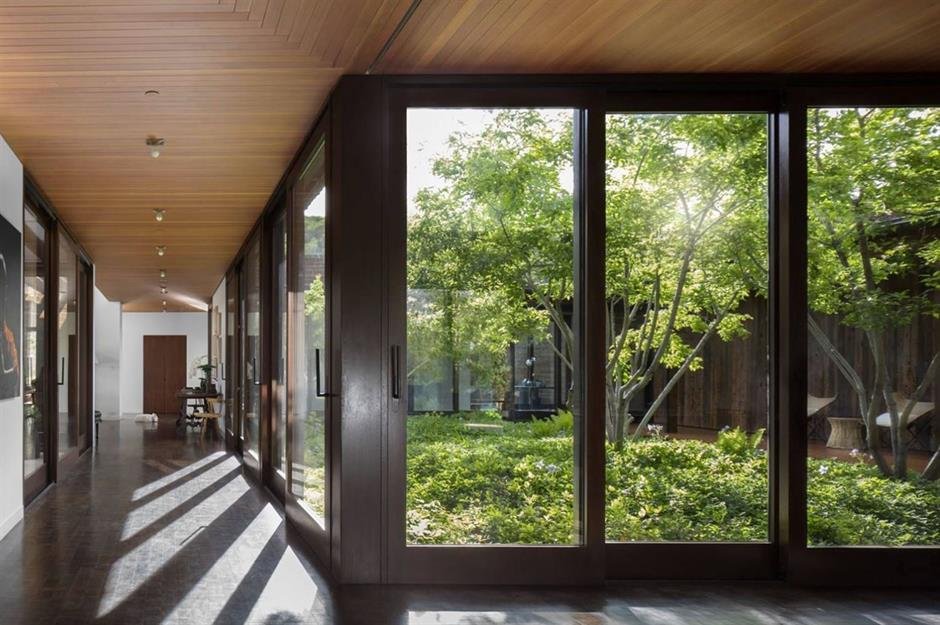Since decades, research shows that people have less stress and better concentration when they are around sensory stimulation and a view of natural spaces. But sadly in many cities, development is more important than greenery. A building’s primary purpose might keep the weather out, but most of the effective job inadvertently deprive us with two key requirements for our well-being and effectiveness.
A good building keeps nature’s elements out– the rain, snow and even the sun. But the question is, are we doing a good job of keeping the weather out, and deprive ourselves of the numerous benefits.
Some researchers state that the connection with nature and the outdoors can lead to lower stress and a higher level of productivity. It is also termed as biophilic design, as Biophilia suggests that humans naturally seek out connections with the natural environment and other forms of life. In architecture, sustainable design strategies connect building occupants to nature.

The office and commercial designers have always acknowledged the importance of bringing in the outdoor. Architects have always tried to bring in the natural daylight, ventilation and green spaces that improve productivity and reduce the likelihood of sick days amongst employees.
We can bring in different kinds of natural movements indoors and reduce the heart rates and artificially generated movement. Seeing and experiencing the natural movements of the kind in an indoor space will be more beneficial than viewing outdoor nature through a window.
Green Buildings and Beyond:
Over the past few decades, architects and designers have developed various approaches for building design that reduce the impact of buildings on the natural environment and their human occupants. But unfortunately, these movements and technologies are followed in new buildings, that benefit only a small number of people compared to those who can make the structures more habitable.

Leading commentators on sustainable design, Judith Heerwagen and Stephen Kellert have suggested that, in order to have a meaningful impact on the environmental problems, green building can no longer simply ‘do no harm’. They have rather argued on the fact that buildings to actively demonstrate ways of living in harmony with nature.
Nature’s Calming Effects:
Walks in the park, hikes in the forest and peaceful time along the beach are known to relieve stress. Spending time in nature improves our ability to focus, and there’s evidence that helps us to heal physically as well.
For us now, the new normal has led to an unprecedented shrinking of our worlds. Even under normal circumstances, our ability to spend time outdoors is often limited to work and lack of mobility. Whenever you happen to live, though, the Earth’s largest wilderness, its atmosphere, is only the thickness of a pane of glass away. Buildings are typically designed to keep the weather out, but welcoming its movement into our homes also proves to have a unique capacity to calm us.
Moving light patterns reflected from a wind-disturbed water surface, similar to the one we see under boats and bridges, have also been showing to have a significant calming effect on heart rate, and keep us alert. A glazed internal courtyard can bring weather-generated movement into its surrounding indoor spaces. Indoor sensory change is likely to have a greater beneficial effect on us when we think it is natural and live.

Designing all buildings is clearly take a great deal of money and time but there are simple ways in which we can create such effects in our home right now at minimal cost:
- Placing an insect screen curtain outside the window. generates different patterns that change as the wind varies. These patterns also cast moving shadows on the interior surfaces.
- Suppose you have a deck or balcony that received direct sunlight, the wind-generated movements of foliage can be projected onto the surface to make it a part of an interior.
- Wind-animated reflected sunlight onto the indoor surfaces by placing a shallow tray of water on a sun-facing balcony can be recreated at night by directing an external light onto the surface light.

Nature’s practical benefits for humans and the environment have always reconnected us with nature, no matter what amount of time we spend inside.

